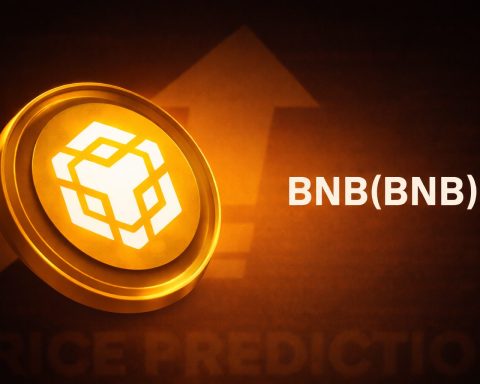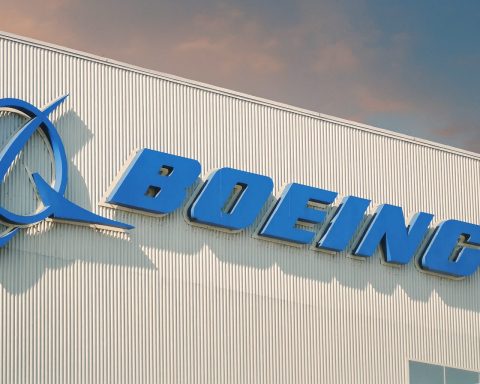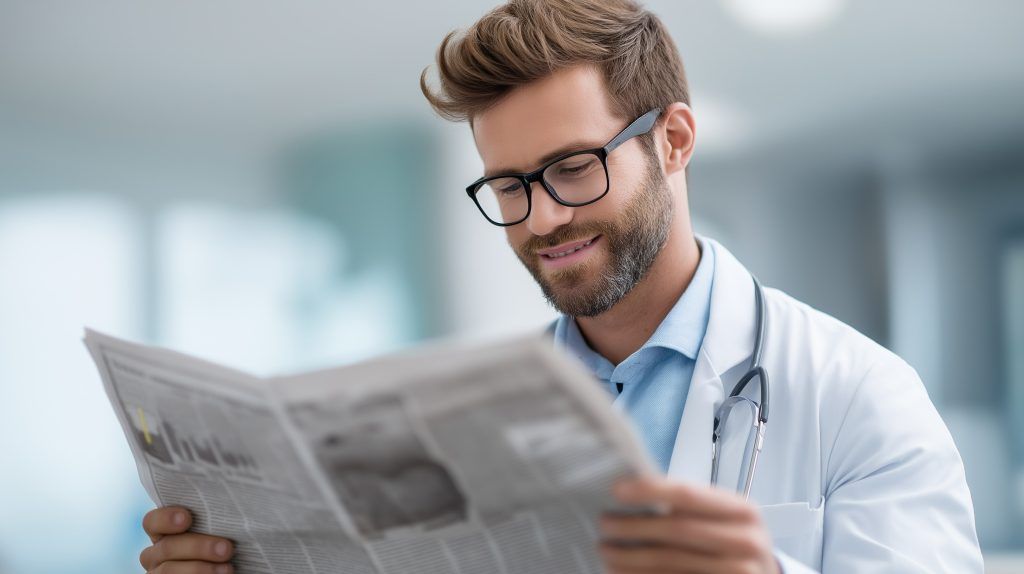- Nasdaq Composite reached a record high for the second consecutive day on Friday, August 8, 2025, led by Apple and other tech shares.
- The S&P 500 rose 0.8% and the Dow Jones rose 0.5% on Friday, August 8, 2025, with Nasdaq up 3.9% for the week.
- The pan-European STOXX 600 climbed 0.2% on Friday and was up 2% for the week, with banking stocks leading the advance. <liZurich’s SMI index rose as U.S. tariffs on Swiss goods took effect at 15%.
- Japan’s Nikkei index jumped 1.85% on Friday, while broad Asia-Pacific shares ex-Japan fell about 0.6%.
- Gold futures surged to an intraday high of $3,534 per ounce, settled at $3,491, with spot near $3,394.
- Brent crude settled at $66.59 per barrel and WTI at $63.88, with both finishing the week in losses due to a weaker demand outlook.
- The FAO Food Price Index rose 1.6% in July to its highest level in over two years, with meat at an all-time high and vegetable oils up 7% in a month.
- The U.S. 10-year Treasury yield rose to about 4.28%, and the Bank of England cut the Bank Rate to 4.00% in a 5-4 vote, sending the pound up about 0.4%.
- Bitcoin surpassed the $120,000 milestone for the first time, peaking around $123,153, while the crypto sector’s market value breached $4 trillion.
Global Market Movements
Stocks & Equities
Wall Street Rally: U.S. stock markets extended their summer rally. The Nasdaq Composite notched a record high for the second day in a row on Friday, driven by booming tech shares (Apple and peers) and optimism about potential interest rate cuts [1] [2]. The S&P 500 rose 0.8% and Dow Jones 0.5% on the day [3], and all three major indices posted solid weekly gains (Nasdaq +3.9% for the week) [4]. “There are certainly investors who think if the Fed is going to cut rates then… don’t fight the Fed on lower rates,” noted one investment manager, although he cautioned that tariff uncertainties remain a wild card [5].
Europe Advances: European equities also climbed, with the pan-European STOXX 600 up 0.2% Friday and +2% for the week, its best week in three months [6]. Banking stocks led the charge in Europe, helping lift sentiment [7]. Zurich’s SMI index gained even as new U.S. tariffs on Swiss goods took effect (at a lower 15% rate than initially feared) [8]. Analysts warned that even a smaller tariff is “actually a big shock” that could eventually hit economic data despite the market’s relief at avoiding worst-case scenarios [9] [10].
Asia Mixed: In Asia, Japan’s Nikkei index jumped 1.85% on Friday, buoyed by tech optimism, while broad Asia-Pacific shares (ex-Japan) slipped about 0.6% [11]. Investors in Asia remained cautious amid China’s weak inflation data (see Economic Developments below) and ongoing trade uncertainty.
Commodities
Gold Glitters:Gold lived up to its safe-haven status – U.S. gold futures surged to an all-time high of $3,534 per ounce intraday on tariff jitters [12]. Futures settled at $3,491, up 1.1% on the day [13], while spot gold hovered near $3,394 an ounce. Traders rushed into bullion after reports that U.S. import tariffs on gold bars might not exempt commonly traded sizes, adding to uncertainty [14] [15]. Gold’s record-setting run underscores how trade tensions are stoking demand for inflation hedges.
Oil Volatile:Oil prices whipsawed on geopolitical news. Early Friday, crude benchmarks fell on signs the U.S. and Russia may negotiate a truce in Ukraine, which could ease war-related supply fears [16]. By day’s end, prices stabilized – Brent crude settled at $66.59 (+0.24%) and WTI at $63.88 (flat) [17]. Both crude benchmarks still finished the week with losses, pressured by the dimming demand outlook under new tariffs [18].
Food Commodities: A notable uptick in global food costs is emerging as an inflation worry. The U.N. FAO Food Price Index jumped 1.6% in July to its highest level in over two years [19]. Meat prices hit record highs (strong import demand from China/US for beef and lamb), and vegetable oil prices surged 7% in a month, even as cereals and sugar became cheaper [20] [21]. This renewed rise in food commodities – meat index at an all-time peak [22] – could feed into consumer inflation in coming months.
Bonds & Currencies
Bonds: Global bond markets saw yields tick up amid heavy supply and shifting rate expectations. In the U.S., the 10-year Treasury yield climbed to about 4.28%, on track for its first weekly rise in three weeks after a string of weak bond auctions pushed yields higher [23]. UK gilts also sold off slightly post-BoE meeting, reflecting the Bank of England’s less-dovish-than-expected cut (see below).
Currencies: The U.S. dollar firmed, with the dollar index up about 0.3% for the day [24]. The euro slipped 0.2% against the dollar [25]. The British pound initially jumped after the BoE’s split decision – trading up ~0.4% on the day to $1.34 – as traders interpreted the close vote as a sign of caution on further easing [26]. In Asia, the Japanese yen weakened to around a 7-month low, down 0.4% against the dollar [27], amid widening U.S.-Japan interest rate differentials. Emerging market currencies were mixed, balancing dollar strength against hopes of a U.S. rate cut.
Cryptocurrencies
Bitcoin & Crypto Boom:Bitcoin hovered near $117,000 going into the weekend, not far from its record high set earlier in the week. On Monday, Bitcoin vaulted past the $120,000 milestone for the first time ever, hitting a peak around $123,153 [28] before easing back on mild profit-taking. The leading crypto is now up over 27% year-to-date [29], outpacing most stock indices. Analysts cited multiple tailwinds – from rising institutional demand to optimism for U.S. regulatory clarity – behind the crypto surge. “It’s riding a number of tailwinds… support from Trump… expectations of further gains,” noted one market analyst, who suggested Bitcoin could soon “have a look at the $125,000 level” if momentum continues [30].
policy tailwinds: This week U.S. lawmakers advanced landmark crypto legislation. The House of Representatives passed bills to establish clear rules for cryptocurrencies – including a regulatory framework for stablecoins – which President Trump has signaled he will sign into law [31] [32]. The prospect of long-sought rules (“the nation’s regulatory framework [crypto] has long sought” [33]) and Trump’s vocal support (he calls himself the “crypto president”) have fueled speculation of a coming policy boost for digital assets [34]. The entire crypto sector’s market value breached $4 trillion for the first time, reflecting its evolution into a mainstream asset class [35]. Crypto-linked stocks like Coinbase and Robinhood also hit all-time highs this week [36]. Some analysts now predict Bitcoin could reach $200,000 by end-2025 if current trends persist [37] [38] – a bold call that underscores the ebullient mood in crypto markets.
Major Corporate News & Earnings
Tech Sector: Blockbuster Earnings and Upheaval
Apple’s Big Week: Tech titan Apple Inc. provided a jolt of optimism to markets. The company delivered strong fiscal Q3 results, with revenue up nearly 10% year-on-year to $94 billion and earnings handily beating forecasts [39]. iPhone sales jumped 13.5%, as some customers bought new phones early to get ahead of impending tariffs, according to CEO Tim Cook [40] [41]. Buoyed by the earnings and news that Apple will invest an additional $100 billion in U.S. manufacturing (bringing its 4-year U.S. investment pledge to $600B) [42], Apple’s stock surged 4.2% Friday and 13.3% for the week – its best week since 2020 [43]. The tech sector broadly rallied in tandem, with the S&P 500 tech index hitting a record high close [44].
Intel CEO Controversy: In a highly unusual intervention, U.S. President Donald Trump publicly demanded the resignation of Intel’s new CEO, Lip-Bu Tan, over Tan’s past investments in Chinese tech firms [45]. Trump blasted the chief of the iconic chipmaker as “highly conflicted” regarding China ties and said Tan “must resign, immediately” on social media [46] [47]. The call – coming after a U.S. Senator raised concerns about Tan’s links to Chinese military-associated companies – sent Intel shares down ~3% on Thursday [48]. Such a direct presidential rebuke of a CEO is virtually unheard of, sparking debate on government intrusion into corporate governance. “It would be setting a very unfortunate precedent… You don’t want American presidents dictating who runs companies, but certainly his opinion has merit and weight,” observed Phil Blancato of Ladenburg Thalmann, reflecting Wall Street’s mixed feelings [49]. Intel’s board has so far backed Tan, who said he is committed to U.S. national security goals and has divested problematic holdings [50] [51]. The drama adds uncertainty to Intel’s turnaround efforts as it races to regain its chipmaking edge (having ousted its previous CEO late last year amid strategy setbacks) [52] [53].
Earnings Roundup: Winners and Losers
Amazon’s Mixed Results: E-commerce and cloud giant Amazon.com reported double-digit sales growth but failed to impress investors expecting even more. Q2 revenue climbed 13% to $167.7 billion, topping forecasts, and the company issued an upbeat sales outlook for Q3 [54]. However, Amazon’s lucrative AWS cloud division showed signs of slowing momentum – cloud revenue rose 17.5%, a solid gain but well below the 30%+ growth of key rivals Microsoft and Google [55] [56]. Moreover, AWS’s profit margins shrank to 32.9% (from 35.5% a year ago), the lowest since 2023 [57] [58]. This margin compression and relative underperformance in cloud sent Amazon’s stock plunging over 7% after hours on the results [59] [60]. “AWS is their growth engine and to see that drop in margin is [what’s] dropping the stock,” explained one asset manager [61] [62]. An Aptus Capital analyst went so far as to call AWS’s numbers “alarming,” warning that Amazon’s inability to maintain operating leverage could signal it’s trailing in the AI race [63]. On the positive side, Amazon’s core retail business remained resilient – online store sales rose 11%, and its advertising revenue jumped 23% [64] – with no major hit from tariffs yet, according to CEO Andy Jassy [65] [66]. Still, Amazon’s stumble shows the high bar tech giants face in justifying rich valuations.
Pharma & Travel Outperformers: It wasn’t only tech grabbing headlines. Biopharma leader Gilead Sciences saw its shares leap 8.3% on Friday after the company raised its full-year outlook, buoyed by strong demand for its core therapies [67] [68]. In the travel sector, Expedia Group impressed investors by projecting higher growth in annual bookings and revenues, reflecting robust travel demand. Expedia stock climbed ~4% on the upgraded forecast [69]. These robust corporate outlooks suggest pockets of strength in healthcare and consumer travel, even as other industries navigate uncertainties.
Mergers & Industry Moves
Media Mega-Deal Brewing: A potential big media acquisition grabbed attention late Friday. U.S. TV broadcaster Nexstar Media Group is in advanced talks to acquire rival Tegna Inc., according to insider sources [70]. A deal, if finalized, would unite two of the largest owners of local TV stations in the U.S. and mark a significant consolidation in the broadcasting industry. Tegna’s stock soared 30% in after-hours trading on the report [71], reflecting investor expectations that Nexstar could soon strike a deal barring any last-minute hurdles [72]. The timing is ripe: Tegna’s CEO noted on an earnings call that a recent U.S. court ruling struck down an FCC cap on owning multiple top stations, and the Trump-era FCC is adopting a looser stance on media ownership limits [73]. Those regulatory shifts “could soon ease ownership limits, allowing companies like Tegna and its rivals more room to expand through mergers,” the CEO said [74]. If Nexstar-Tegna proceeds, it would accelerate the industry’s consolidation as traditional broadcasters seek scale to counter cord-cutting and competition from streaming [75].
Energy Sector Shifts: In the energy industry, Saudi oil behemoth Aramco revealed a sharp drop in profits and a strategic pivot. Aramco reported Q2 net income of $22.7 billion, a staggering sum but actually 22% lower than a year ago due to the pullback in oil prices [76] [77]. This marked Aramco’s 10th consecutive quarterly profit decline, underscoring how the world’s top oil exporter is feeling the pinch of weaker crude demand and OPEC’s production curbs. In response, Aramco’s CFO said the company will cut costs and consider divesting some lower-return assets to “unlock capital” for core projects [78] [79]. The firm is reportedly close to selling stakes in pipelines and power plants to raise cash [80]. Aramco also confirmed it will trim its massive dividend payouts by about one-third this year, as free cash flow has been squeezed [81] [82]. With Saudi Arabia’s government relying heavily on Aramco’s dividends for revenue, a sustained oil price below $70 could widen the kingdom’s budget deficit [83] [84]. Aramco’s stock is down ~14.5% in 2025, lagging oil industry peers [85] – a sign that even Big Oil isn’t immune to global headwinds. On the bright side, BP and some Western oil majors surprised with resilient earnings (BP beat forecasts and even hiked its dividend slightly [86]), thanks in part to trading gains and downstream profits. But overall, the energy sector’s focus has shifted to capital discipline and diversification as the era of $100+ oil feels increasingly distant.
Economic & Policy Developments
Central Banks & Interest Rates
Fed Signals Dovish Tilt: U.S. monetary policy is in flux as the Federal Reserve’s leadership evolves. Late Thursday, President Trump nominated Stephen Miran – the White House Council of Economic Advisers chair – to fill a Fed Board vacancy [87]. Miran is viewed as a dovish pick aligned with Trump’s calls for easier policy; he has echoed Trump’s criticism that Fed Chair Jerome Powell was “too late” in cutting rates [88]. If confirmed, Miran would “lock in a vote for rate cuts at all meetings between now and January,” according to NAB economist Ray Attrill [89]. Markets are already betting the Fed will cut rates at its upcoming September meeting – Fed futures imply an 89% chance of at least a 0.25% cut, up from 80% a week ago [90]. Adding to the speculation, reports suggest Fed Governor Christopher Waller has emerged as a leading contender for Fed Chair when Powell’s term ends in May [91]. Waller is seen as more policy-conservative than Miran but still potentially more accommodative than Powell. All these moves point to a Federal Reserve possibly poised to reverse course into easing mode, even as U.S. inflation remains above target (see below). Investors are watching closely: “Don’t fight the Fed” is the mantra, and stocks have rallied in anticipation of a friendlier Fed [92]. Still, the Fed’s next steps will depend on data – July’s CPI report due next week will be a key gauge.
Bank of England’s Split Decision: The Bank of England (BoE) delivered a rate cut this week, but in a far more divided fashion than expected. On Aug 7, the BoE’s Monetary Policy Committee voted 5–4 to cut the Bank Rate by 0.25%, lowering it to 4.00% [93] [94]. This was the BoE’s fifth rate reduction in 12 months, aimed at supporting a slowing UK economy. However, nearly half the committee (4 of 9 members) dissented, preferring to hold rates steady – an unprecedented split that actually required a second round of voting to reach a majority decision [95] [96]. Governor Andrew Bailey and four colleagues favored the cut, citing worsening unemployment and forecasts that UK inflation (currently ~3.6%) will soon fall toward the 2% target [97]. The minority feared that inflation remains too high and were uneasy about easing policy too fast. Markets reacted swiftly: the British pound initially strengthened on the hawkish surprise (a narrow cut suggests the BoE might pause further easing), with sterling up 0.4% after the announcement [98]. UK bond yields ticked higher as traders trimmed bets on additional near-term cuts. “It’s not so much the decision to cut… it’s the extent to which the Committee is divided” that stood out, noted Investec’s chief economist, highlighting the historic split vote as the day’s real story [99]. Analysts say the BoE’s path forward is now murky – some members want to wait and see if inflation actually subsides before cutting again, whereas others worry about a weak job market. Another 25 bp cut is possible in November, but it “will be a very finely balanced decision” and may not happen if disinflation doesn’t clearly take hold by then [100] [101]. The BoE’s cautious approach underscores broader central-bank hesitation globally as they juggle growth worries against inflation that is slowing but still above comfort levels.
Inflation and Economic Indicators
China’s Brush with Deflation:China, the world’s second-largest economy, revealed worrisome price data that suggest its post-pandemic rebound is faltering. The Consumer Price Index (CPI) was flat (0.0% year-on-year) in July – essentially zero inflation, and down from +0.1% in June [102] [103]. Meanwhile, China’s factory-gate prices (Producer Price Index) plunged -3.6% from a year ago, a steeper drop than expected and matching a two-year low [104] [105]. This marked the 10th straight month of producer price deflation in China [106]. The data underscored weak domestic demand and persistent pressures from China’s property slump and export downturn. Authorities in Beijing have responded with targeted stimulus and efforts to reduce industrial overcapacity, but so far the price declines continue [107] [108]. While core CPI (excluding food and energy) ticked up to a 17-month high, that was largely due to base effects; overall, economists see deflationary risks looming. The trend is the polar opposite of Western economies’ inflation battles. Sluggish prices in China could drag on global growth and indicate that Chinese consumers remain cautious. It’s prompting speculation that larger-scale Chinese stimulus or rate cuts might be on the way to re-ignite demand.
Global Inflation Divergence: Elsewhere, inflation trends are mixed. Europe continues to see elevated but easing inflation, though one side-effect of the war and trade disruptions is food price inflation globally. The U.N. FAO reported that world food commodity prices in July were 18.8% below their wartime peak from March 2022, but have now risen for several consecutive months [109]. July’s index was the highest since early 2023 [110], driven by surging costs for meat (all-time high index reading) and vegetable oils (highest in 3 years) [111] [112]. For consumers, this could mean pricier groceries ahead, even as grain and sugar prices moderate. United States: All eyes are on the U.S. CPI report for July, due August 12. After a string of cooler inflation readings, some investors are bracing for a potential uptick that could test the stock rally [113]. The Fed’s preferred core inflation gauges have been gradually slowing, but any surprise in the data could sway the Fed’s decision-making in September. Notably, the U.S. labor market showed hints of cooling off – the August 1 jobs report (for July) revealed slower payroll growth and a slight uptick in unemployment, signs that Fed hikes earlier in the year are tempering hiring. Fed officials in recent days have sounded more dovish as a result, emphasizing they can be patient and that policy is “data-dependent” going forward [114].
Trade Wars and Geopolitics
New Tariffs Kick In: The simmering global trade war entered a new phase as the U.S. implemented a sweeping set of tariffs on August 7 covering dozens of countries. These tariffs – announced by President Trump earlier – officially took effect, levying import duties on a wide range of goods from Europe, Asia, and the Americas. Notably, a 15% U.S. tariff on many European products (from machinery to luxury goods) came into force, less than the 50% tariff Trump had once threatened on Europe [115]. Similarly, tariffs on Chinese and other imports were raised, and India was hit with a hefty 50% tariff on its exports to the U.S. [116]. Businesses worldwide have been scrambling to adjust supply chains and pricing. While the tariffs were somewhat scaled back from the most extreme levels floated earlier, they still represent the highest U.S. tariff regime “in at least a century” in some categories [117]. Economists warn the trade friction could eventually show up in higher costs and lower growth. “The effective shock [from tariffs] is there… 15% is actually a big shock and, at some point, it’s going to show in the data,” cautioned Samy Chaar, chief economist at Lombard Odier, noting markets may be too complacent by focusing only on the fact that 50% tariffs were avoided [118] [119]. Already there are signs of fallout: India retaliated by shelving plans to purchase U.S. fighter jets and other defense equipment, a pause on deals worth billions, in response to Trump’s 50% tariff on Indian goods [120]. Tensions are also flaring with Europe and China, though behind-the-scenes negotiations continue. U.S. Commerce officials hinted some tariff exemptions may be negotiated for critical sectors, which helped lift tech stocks on hopes that companies (like chipmakers) could sidestep the worst of the levies by localizing production [121] [122].
Geopolitical Bright Spot: One piece of potentially good news came on the geopolitical front. Investors latched onto a report that the U.S. and Russia are exploring a deal to halt the war in Ukraine, which has raged for over a year and roiled global markets [123]. The report suggested preliminary talks aimed at a ceasefire or truce. While details are scarce and a breakthrough is far from certain, even the hint of progress was enough to momentarily sway markets – crude oil prices dipped on the prospect of eased geopolitical risk [124], and defense stocks pulled back. Diplomats remain cautious, but any steps toward peace in Eastern Europe would remove a major source of uncertainty for energy and grain markets (not to mention humanitarian relief). Separately, in the Middle East, Saudi Arabia and other OPEC members are closely watching these developments, as a Ukraine ceasefire could impact oil supply routes and Russian output. For now, the global business climate remains a mix of cross-currents: easing war fears on one hand, but escalating trade conflicts on the other.
Bottom Line: The period of August 8–9, 2025 showcased a dynamic convergence of forces in global business. Equities surged to new highs, powered by tech euphoria and hopes that central banks will pivot to rate cuts, even as gold and safe-haven assets also climbed amid trade and growth anxieties. Corporate news was headlined by stellar earnings (and some disappointments) at the world’s biggest companies, plus major moves in media and tech leadership. On the economic front, policymakers walked a fine line – from the BoE’s split decision to China’s deflation fight – highlighting the delicate balancing act between fostering growth and taming inflation. Trade policy once again injected volatility, with new tariffs and retaliations reminding markets that the rules of global commerce are shifting in real-time. As one analyst put it, investors are trying to “focus on the good news” [125] – strong earnings, lower rates – but cannot ignore the challenges, be it a 15% tariff shock or a potential pullback in stocks if inflation surprises. All told, this whirlwind week sets the stage for a pivotal end to the summer: market participants will be watching the next data releases and policy cues closely to see if the rally can sustain or if a new chapter of volatility awaits [126].
Sources: Reuters, et al. – Key developments and quotes have been drawn from Reuters coverage on August 7–9, 2025 and other reputable financial news outlets [127] [128] [129], ensuring an up-to-date and reliable account of global business news during this period.
References
1. www.reuters.com, 2. www.reuters.com, 3. www.reuters.com, 4. www.reuters.com, 5. www.reuters.com, 6. www.reuters.com, 7. www.reuters.com, 8. www.reuters.com, 9. www.reuters.com, 10. www.reuters.com, 11. www.reuters.com, 12. www.reuters.com, 13. www.reuters.com, 14. www.reuters.com, 15. www.reuters.com, 16. www.reuters.com, 17. www.reuters.com, 18. www.reuters.com, 19. www.reuters.com, 20. www.reuters.com, 21. www.reuters.com, 22. www.reuters.com, 23. www.reuters.com, 24. www.reuters.com, 25. www.reuters.com, 26. www.reuters.com, 27. www.reuters.com, 28. www.reuters.com, 29. www.reuters.com, 30. www.reuters.com, 31. www.reuters.com, 32. www.reuters.com, 33. www.reuters.com, 34. www.reuters.com, 35. www.reuters.com, 36. www.reuters.com, 37. www.reuters.com, 38. www.reuters.com, 39. www.reuters.com, 40. www.reuters.com, 41. www.reuters.com, 42. www.reuters.com, 43. www.reuters.com, 44. www.reuters.com, 45. www.reuters.com, 46. www.reuters.com, 47. www.reuters.com, 48. www.reuters.com, 49. www.reuters.com, 50. www.reuters.com, 51. www.reuters.com, 52. www.reuters.com, 53. www.reuters.com, 54. www.reuters.com, 55. www.reuters.com, 56. www.reuters.com, 57. www.reuters.com, 58. www.reuters.com, 59. www.reuters.com, 60. www.reuters.com, 61. www.reuters.com, 62. www.reuters.com, 63. www.reuters.com, 64. www.reuters.com, 65. www.reuters.com, 66. www.reuters.com, 67. www.reuters.com, 68. www.reuters.com, 69. www.reuters.com, 70. www.reuters.com, 71. www.reuters.com, 72. www.reuters.com, 73. www.reuters.com, 74. www.reuters.com, 75. www.reuters.com, 76. www.reuters.com, 77. www.reuters.com, 78. www.reuters.com, 79. www.reuters.com, 80. www.reuters.com, 81. www.reuters.com, 82. www.reuters.com, 83. www.reuters.com, 84. www.reuters.com, 85. www.reuters.com, 86. www.reuters.com, 87. www.reuters.com, 88. www.reuters.com, 89. www.reuters.com, 90. www.reuters.com, 91. www.reuters.com, 92. www.reuters.com, 93. www.reuters.com, 94. www.reuters.com, 95. www.reuters.com, 96. www.reuters.com, 97. www.reuters.com, 98. www.reuters.com, 99. www.reuters.com, 100. www.reuters.com, 101. www.reuters.com, 102. www.reuters.com, 103. www.reuters.com, 104. www.reuters.com, 105. www.reuters.com, 106. www.reuters.com, 107. www.reuters.com, 108. www.reuters.com, 109. www.reuters.com, 110. www.reuters.com, 111. www.reuters.com, 112. www.reuters.com, 113. www.reuters.com, 114. www.reuters.com, 115. www.reuters.com, 116. www.reuters.com, 117. www.reuters.com, 118. www.reuters.com, 119. www.reuters.com, 120. www.reuters.com, 121. www.reuters.com, 122. m.economictimes.com, 123. www.reuters.com, 124. www.reuters.com, 125. www.reuters.com, 126. www.reuters.com, 127. www.reuters.com, 128. www.reuters.com, 129. www.reuters.com










